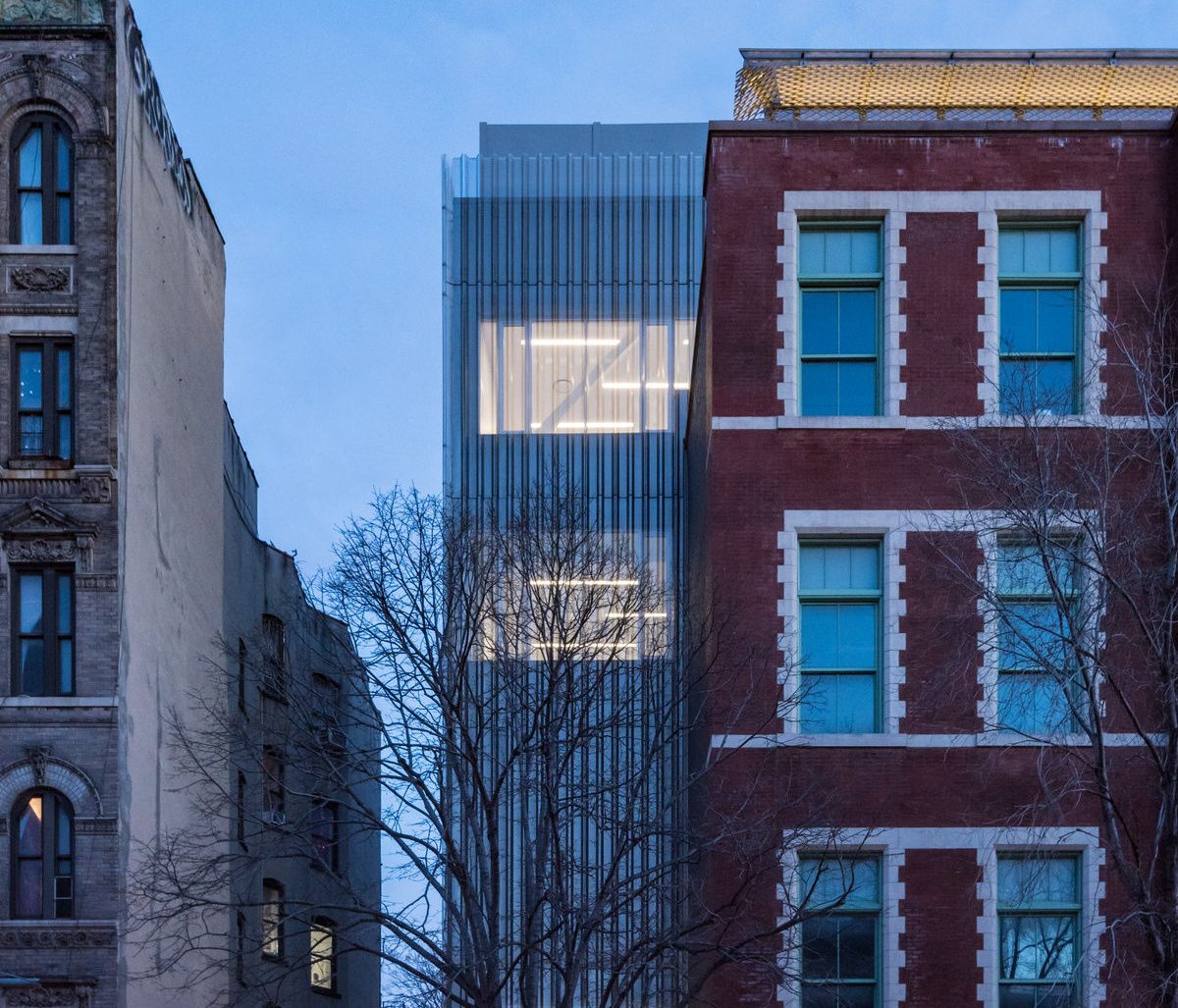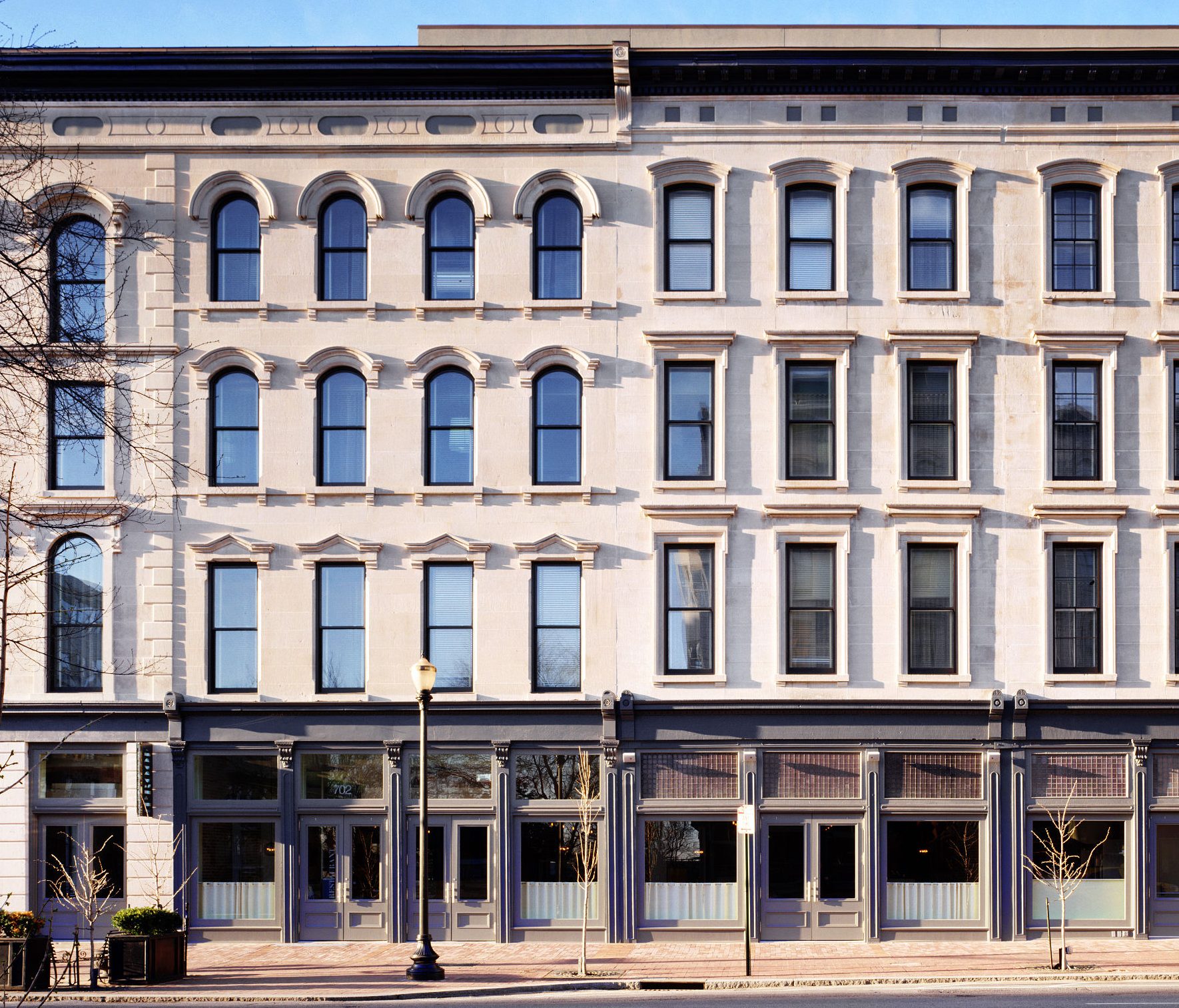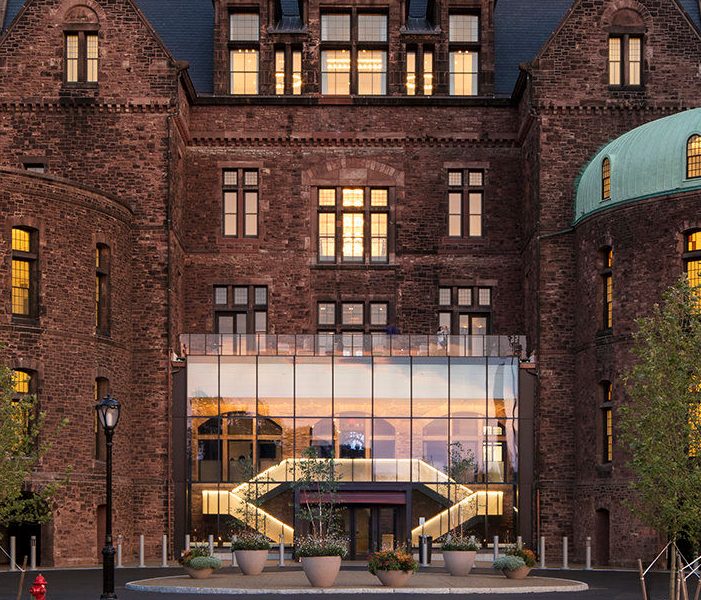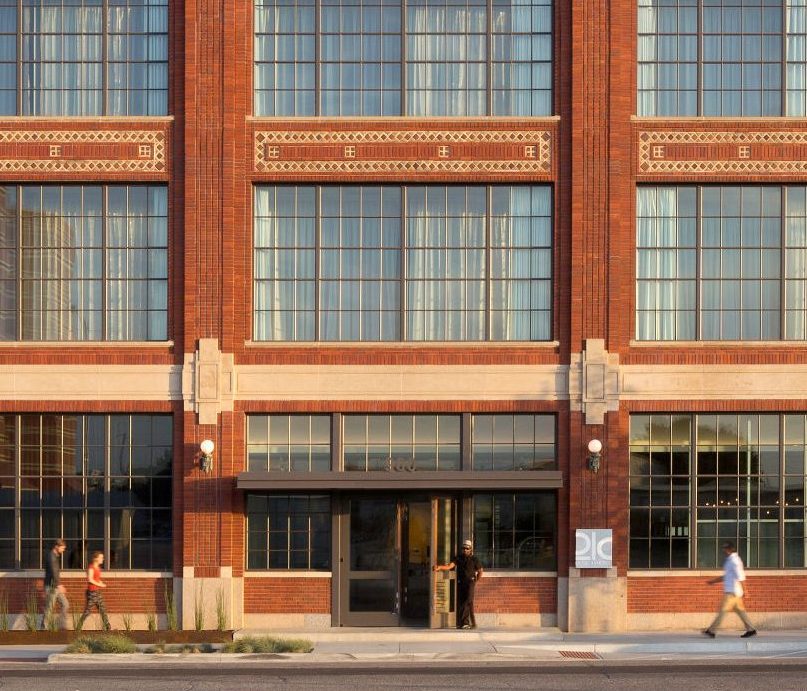Many of our projects have transformed old buildings for new futures. Sometimes these projects are catalysts in their communities and are a part of a larger renewal strategy. In other cases, in transforming old buildings for new uses, we give “presence” to the past to reinforce the enduring values of the institutions with which we work.
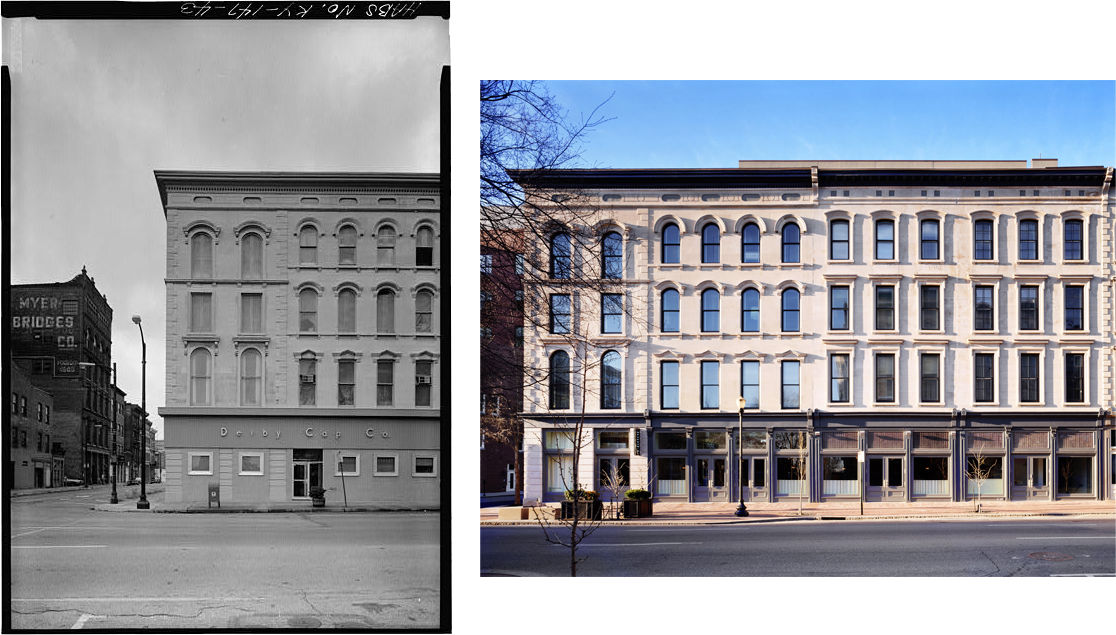
The restored facades of 21c Louisville’s five contiguous 19th century warehouse buildings only hints at the transformative nature of the project, which becomes immediately apparent inside. See the project
We find terms like restoration, renovation, and adaptive reuse to be insufficiently expressive in describing our work. Our projects may be reverent or irreverent. Our design approach to existing buildings preserves the past by contrast, not mimicry—through the successful juxtaposition of old and new.
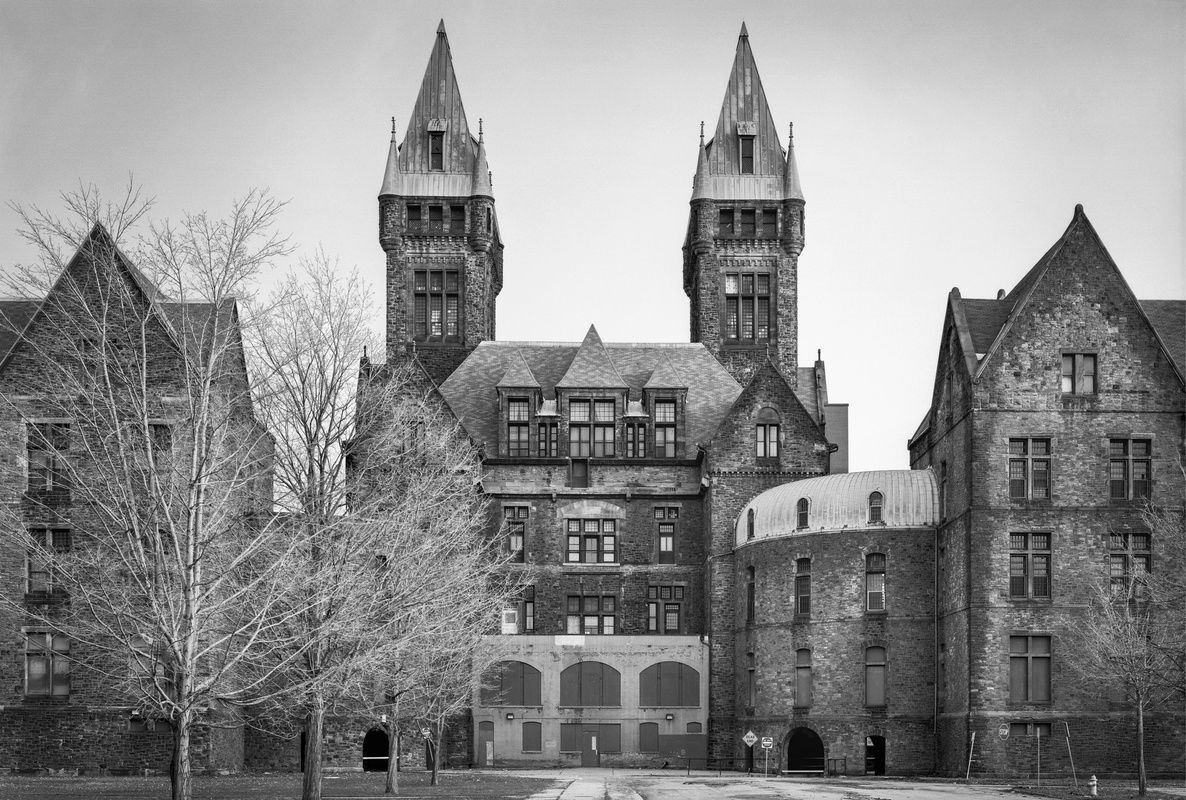
The national historic landmarked Richardson Olmsted Campus was both lovingly restored and brought into the 21st century with strategic contemporary interventions, such as a new glass entry pavilion.
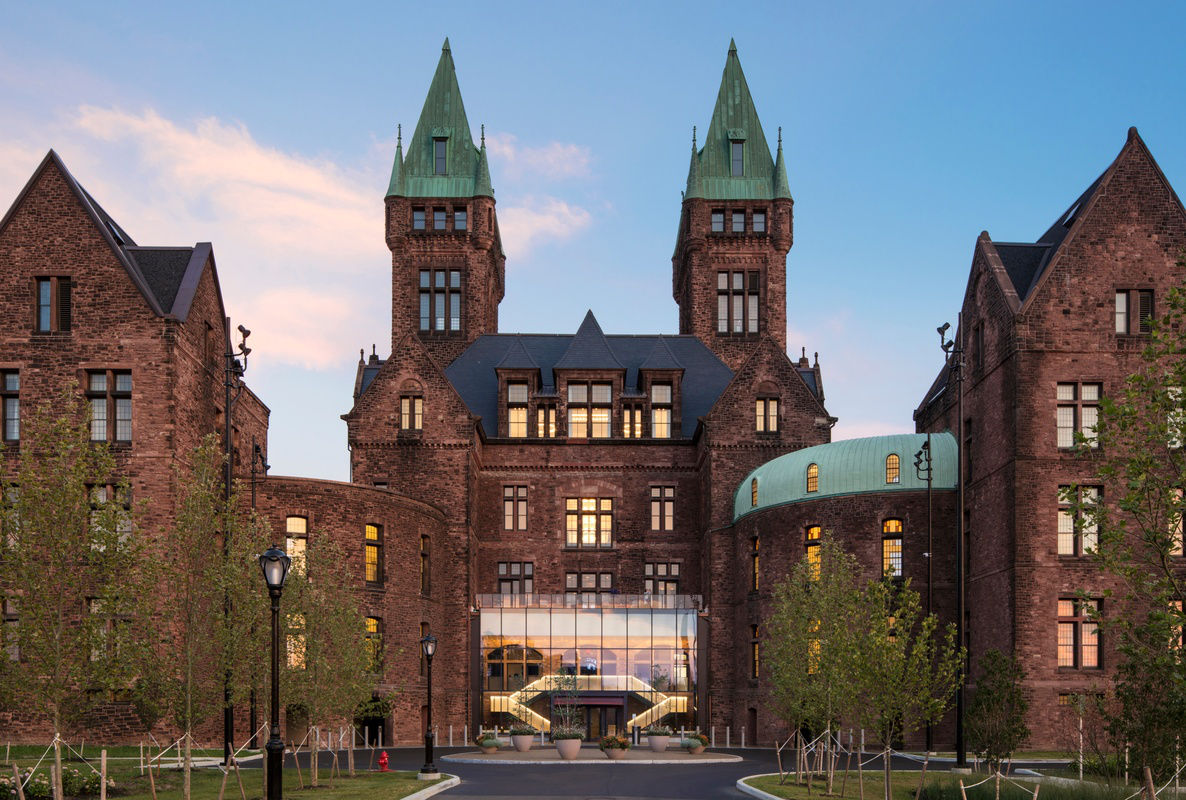
This modern addition transformed the building for a new use – literally, changing where and how one enters the building – while retaining the deep layer of history. See the project
Transforming an old structure into something entirely new, a place that no one ever imagined, is one of the most exciting things we do.
Terrence Schroeder, Principal
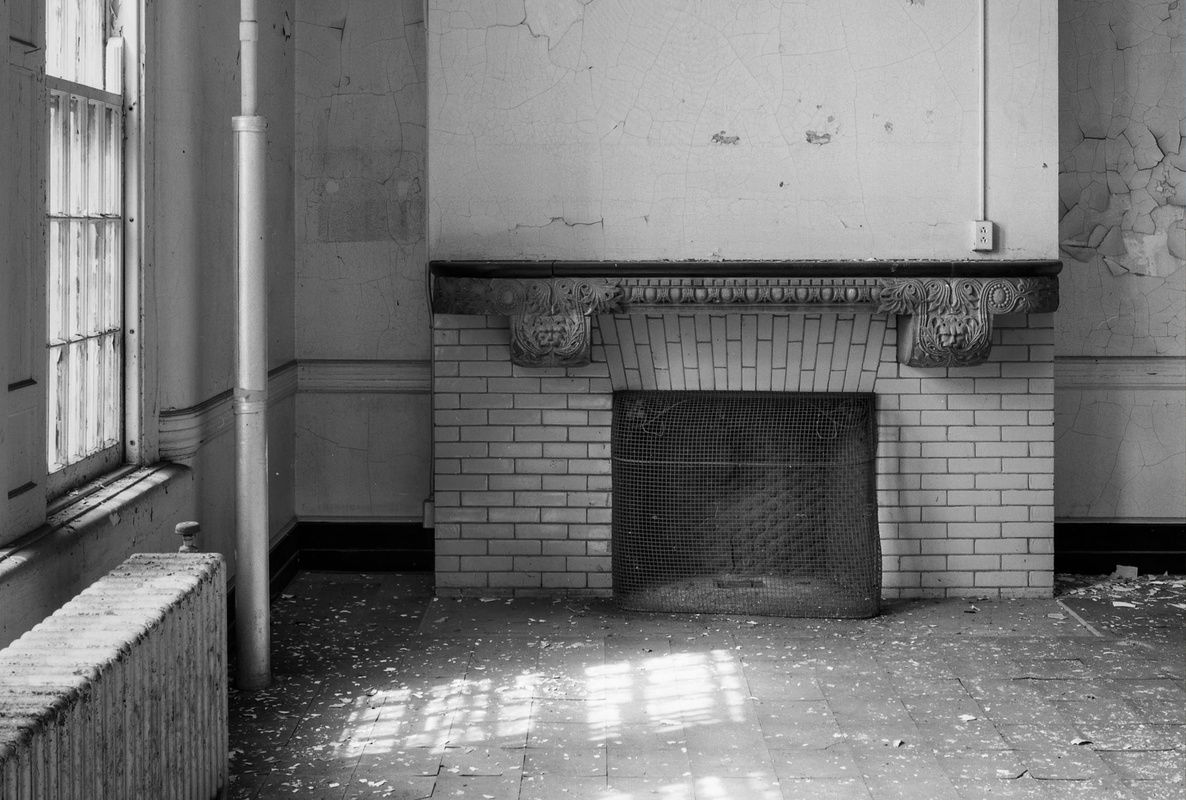
Historic elements, like this fireplace, can be respected and restored to provide the foundation for the project’s character.
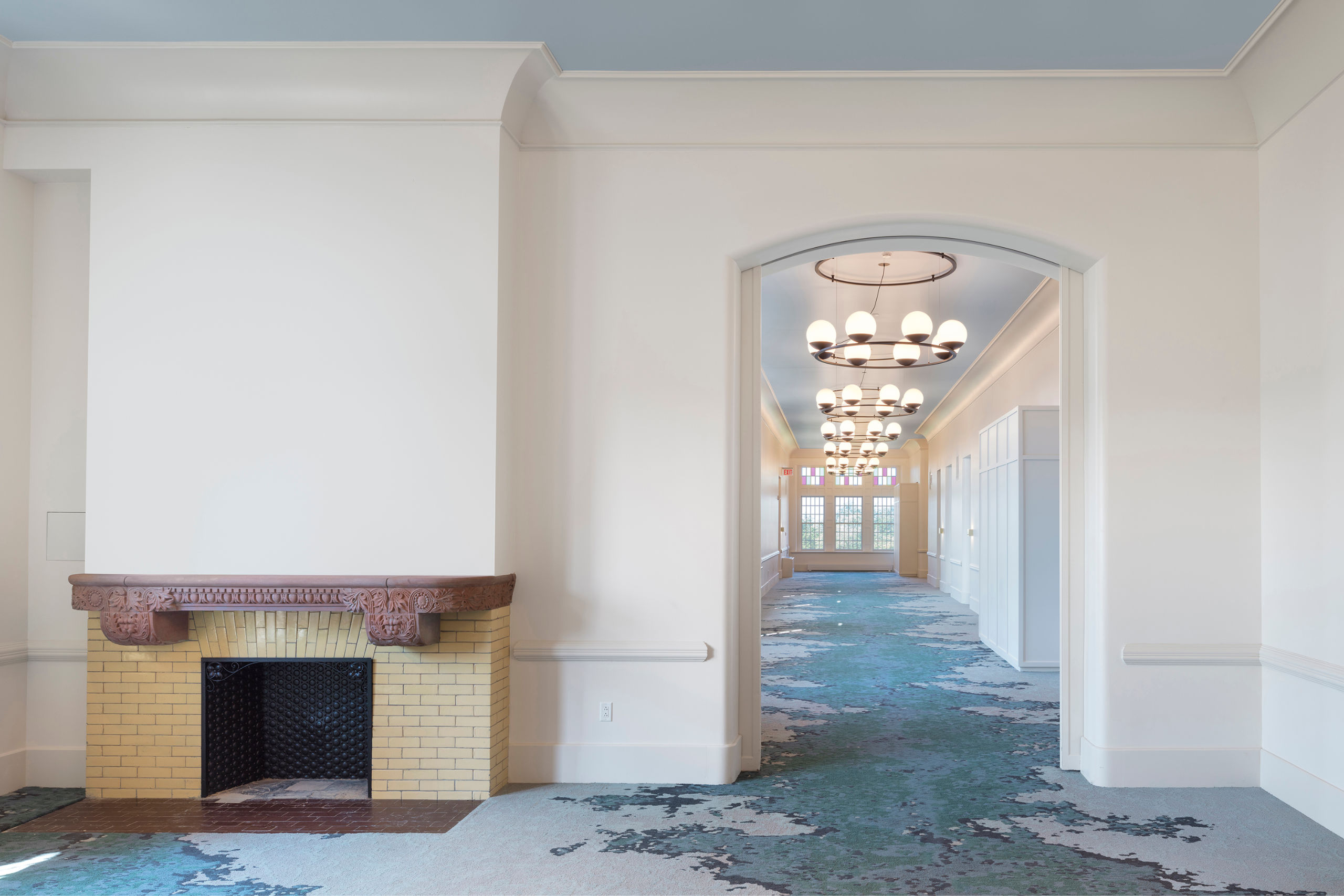
The goal of respecting historic elements, however, need not mandate literal historicism. A new, more contemporary layer, such as the custom, abstractly patterned carpet at the Richardson Olmsted Campus, speaks to building’s new life. See the project
We take apart old buildings to reveal their underlying logic and to create new spatial and programmatic possibilities. Rethinking buildings from first principles… from the inside-out, and putting them back together, offers countless possibilities to create the spaces of contemporary life.
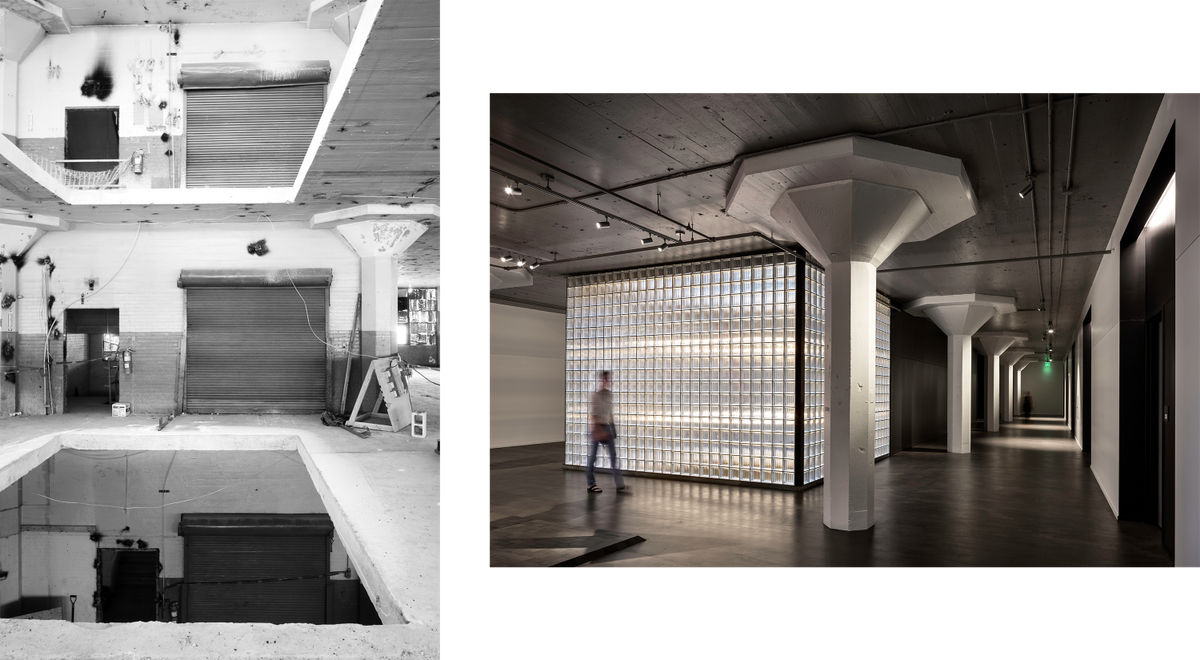
At 21c Oklahoma City, a former Ford automobile plant was transformed into a hotel and museum. Design strategies ranged from the subtle – highlighting the existing concrete structure – to the dramatic – carving new light wells into the deep floor plates to bring light into the building. See the project
To reuse old buildings is both profound and optimistic: an act of faith that inherently-sustainable design strategies lead to better cities and better buildings.
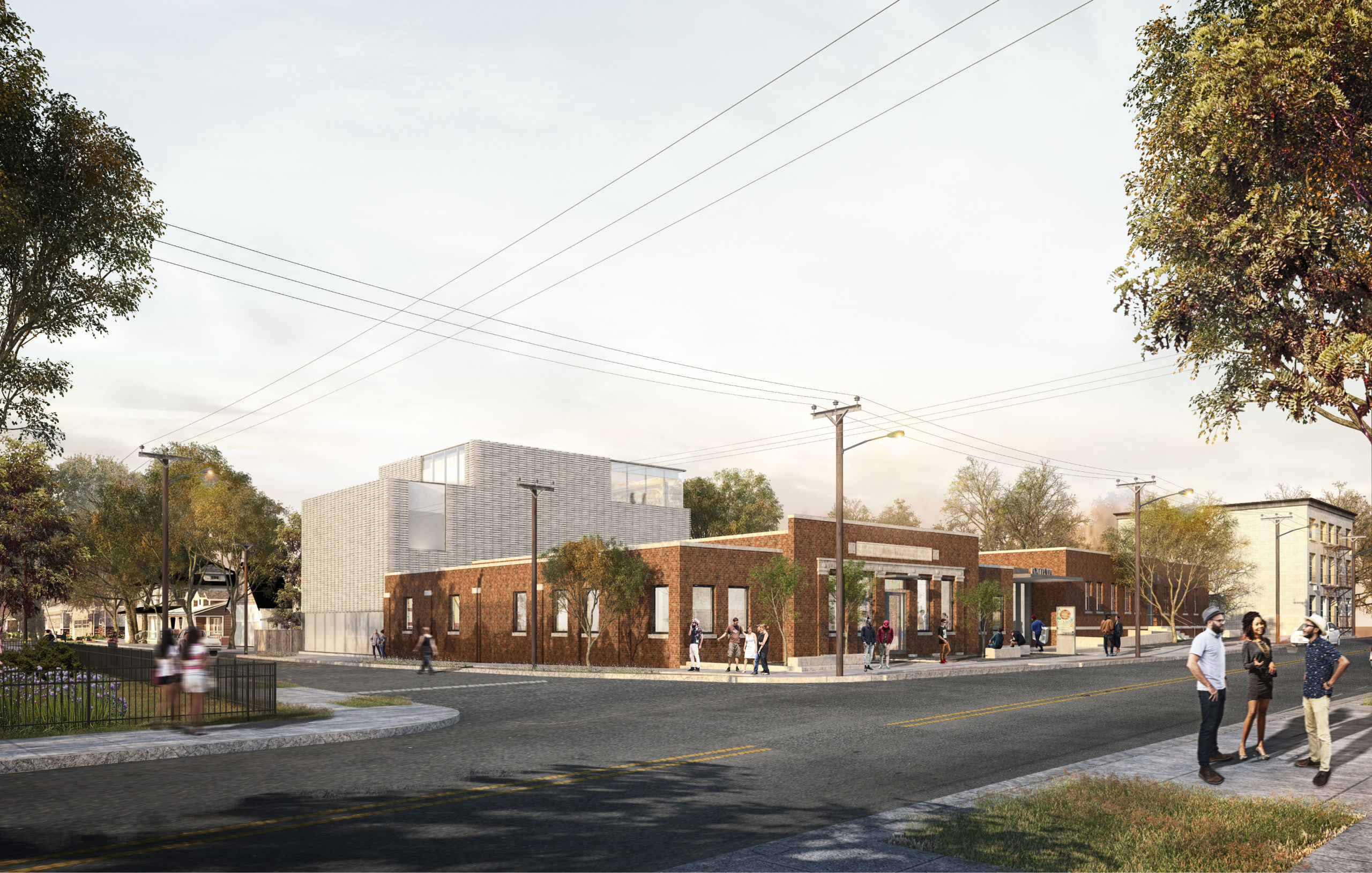
For NXTHVN, we transformed two former factory buildings and added a deliberately “new” addition to create an arts and community incubator. See the project

